Installing and first run.
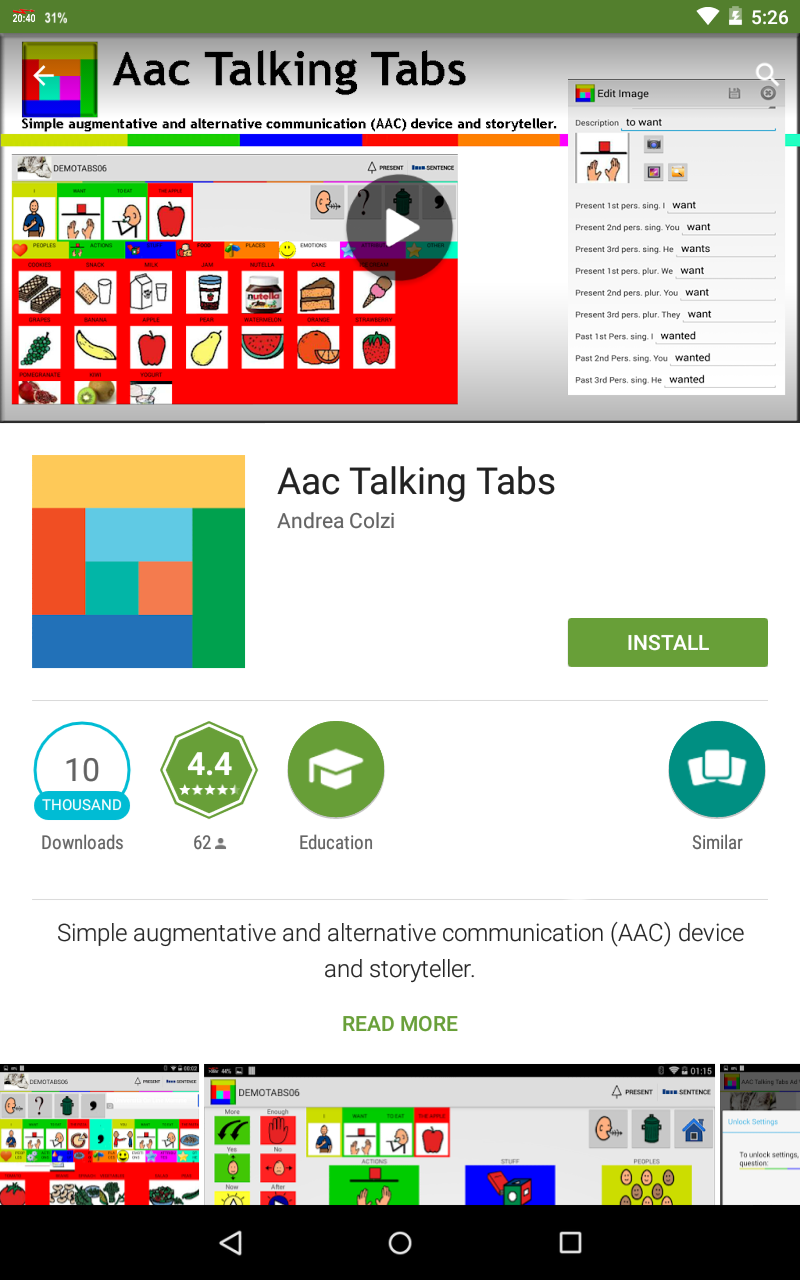
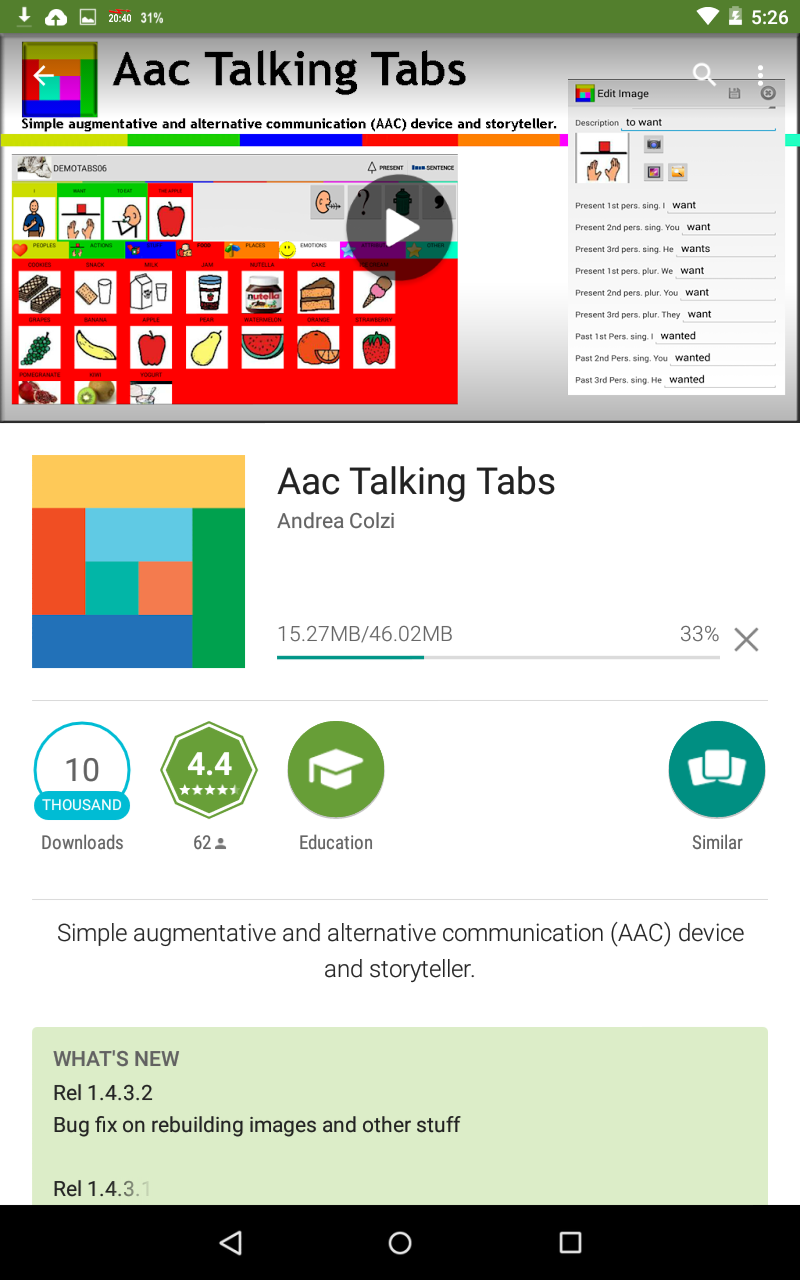
Aac Talking Tabs can be downloaded via the Play Store from the following link or by simply searching "Aac Talking Tabs" on the play store.
The application size is about 3.5 MB plus about 43MB of library which contains the ARASAAC images. It could happen that the 43 MB of images may not be downloaded immediately. In any case the application provides to download it after the first start.

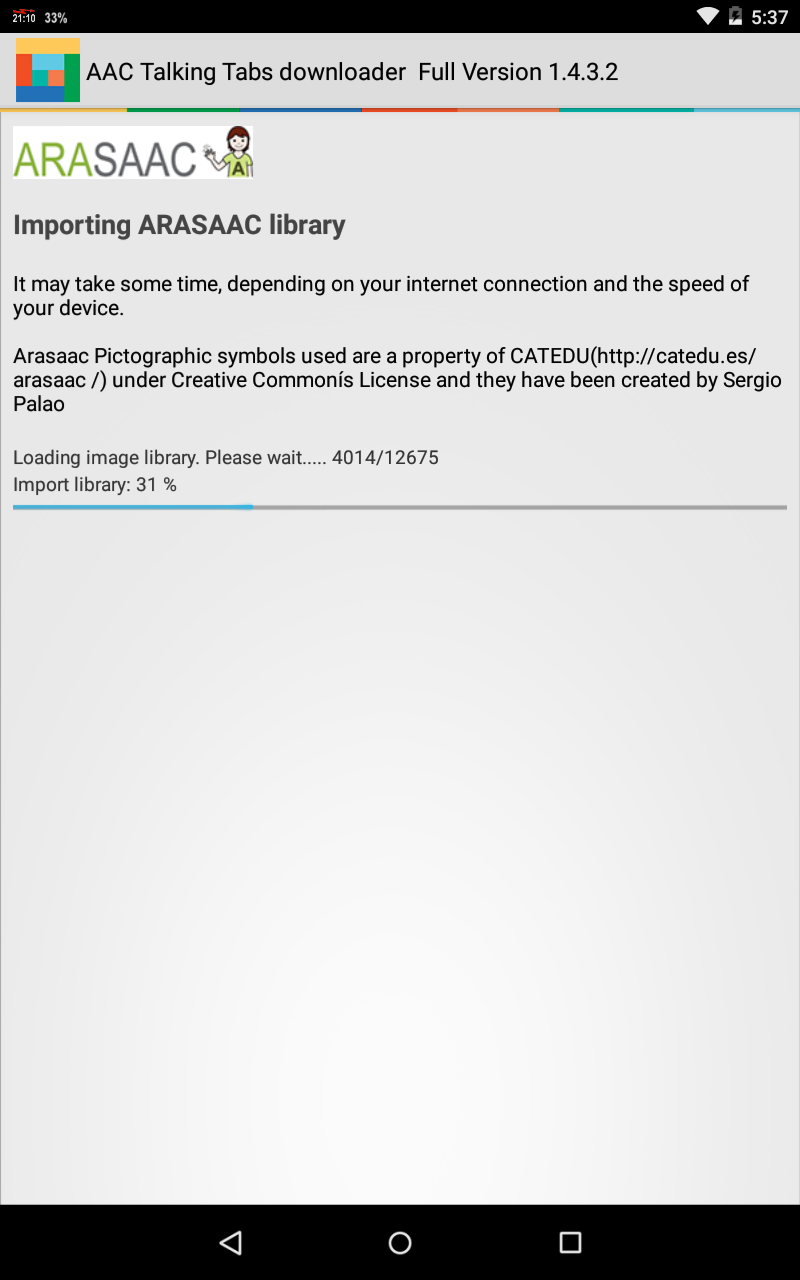
Once installed we proceed with the first run. Every time the application runs a check is done on the ARASAAC library; It is checked if you have downloaded and whether it was indexed. When you first start it's sure that the library is not indexed so we proceed to its indexing by pressing the ARASAAC symbol. The tablet then starts to index all library entries. The items are more than 13,000 but the images are about 9000. This is because each image can be searched with multiple keywords. Indexing all entries will take some time, depending on the speed of the tablet.
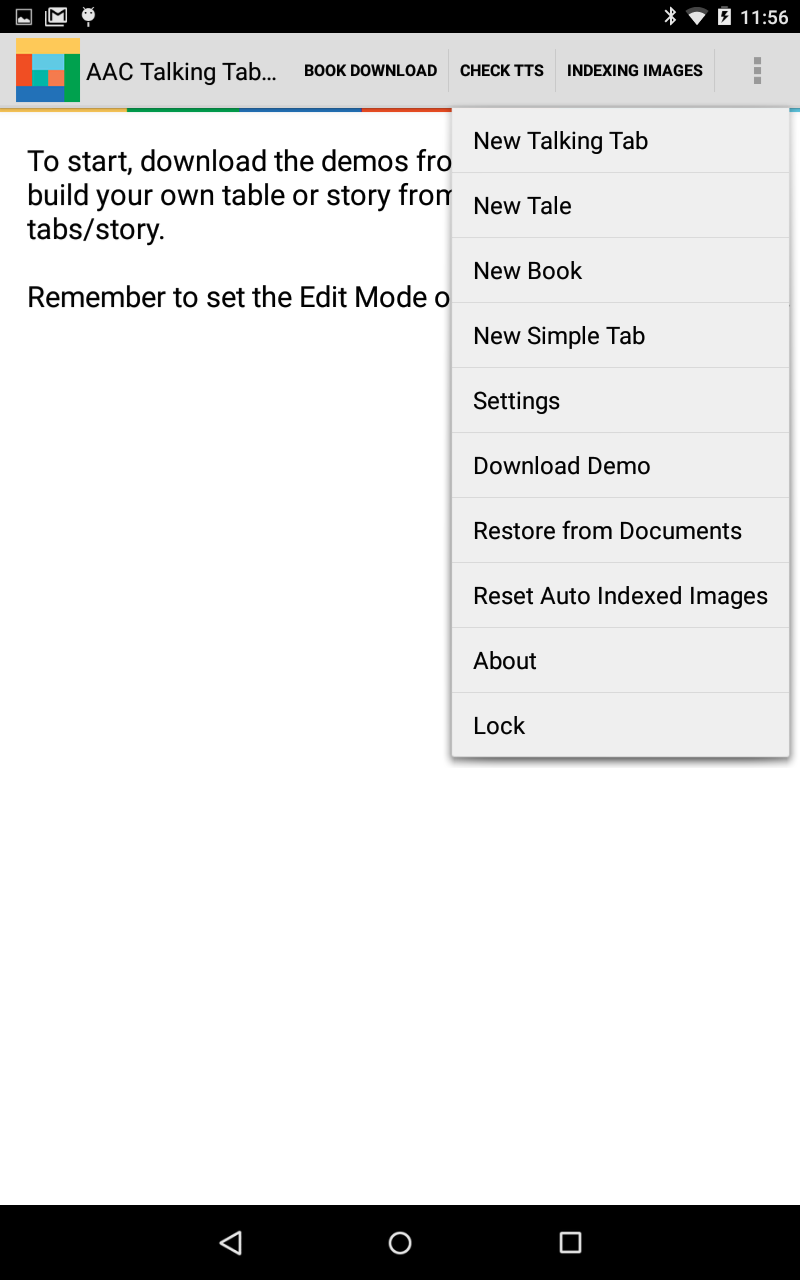
Once indexed, we download the demo, a table and a story. Just go to the menu and press "Download Demo".
Let's open the demonstration table to see how it is made
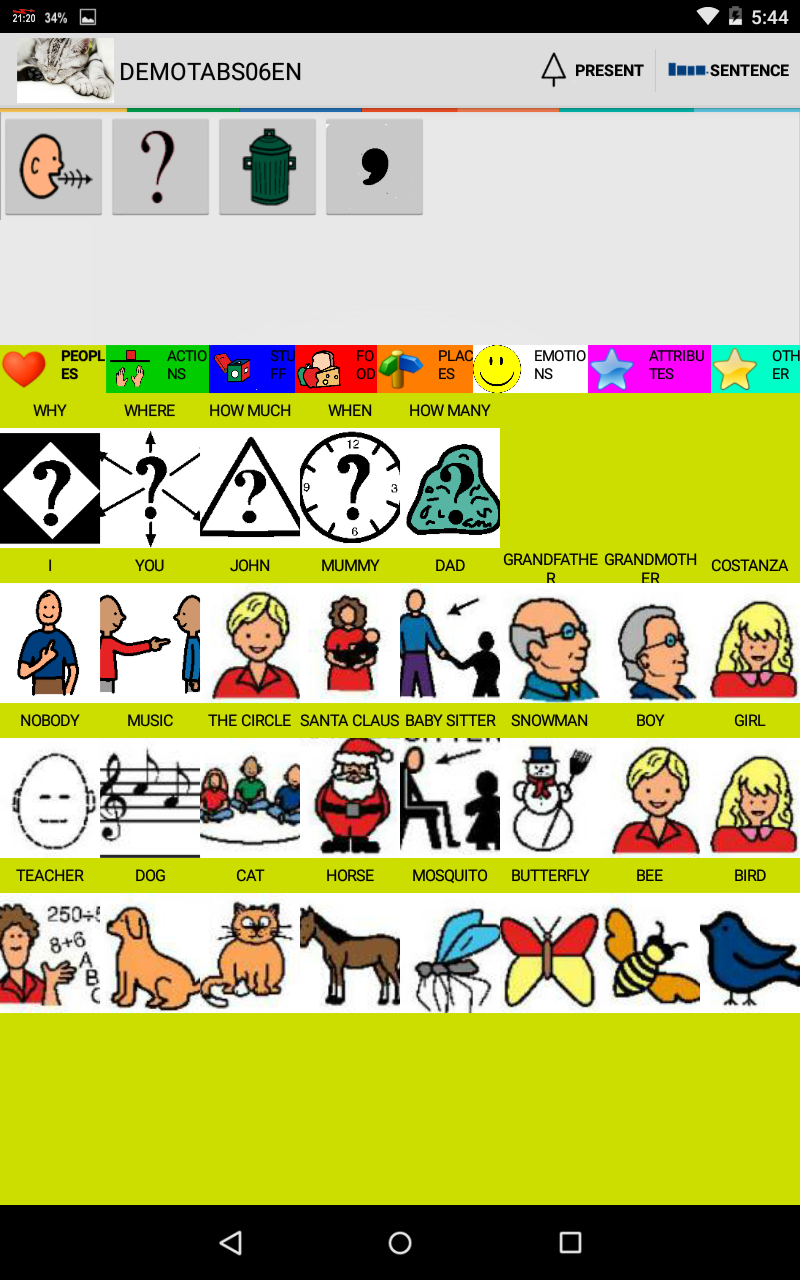
There are 8 sections divided as follows: people, actions, objects, food, places, emotions, adjectives and other. The 8 sections are optional, some of them or all of them may be enabled. We'll see it later. The table is in play mode so we can already do some tests to see how it works and build a few sentences. But let's return back to the main page and see some configurations.
From the main menu let's open the settings:
From here we can switch from play to edit mode (Edit Mode). The other configurations let you:
Let's set configurations in edit mode and let's go back. With a long tap on the demonstration table image, it appears a context menu.
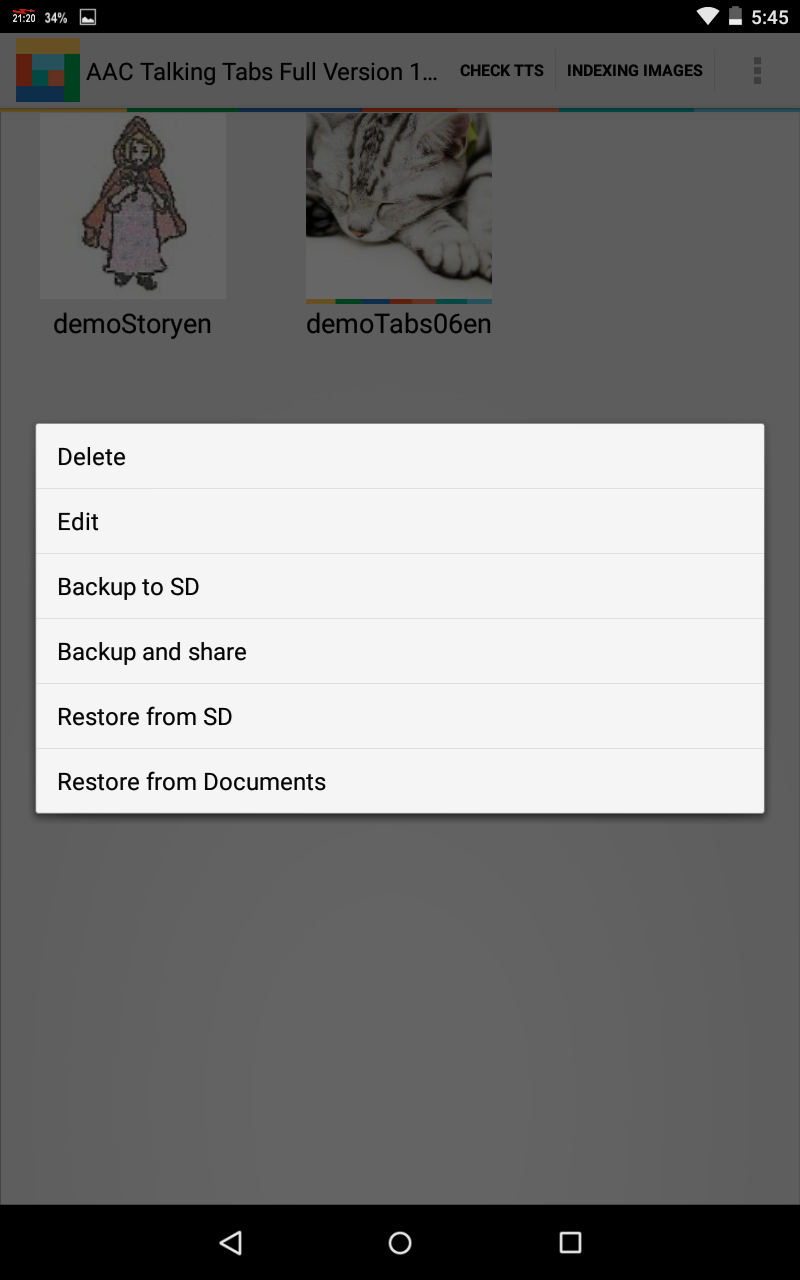
Let's press Edit and see what options are available:
Many of the options are explanatory. I will only comment on the following:
As mentioned above, you can enable and disable the various tabs using the corresponding buttons.
The image of the table can be added directly by taking a picture, browsing through the images stored on the tablet and using the file manager to get a library image, choosing from the indexed images. We will see how you can choose the images.